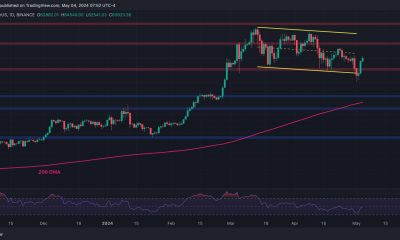Commodities
Exclusive-Russia struggles to sell Pacific oil, 14 tankers stuck – sources, data


© Reuters. FILE PHOTO: The regional office of Russian oil firm Rosneft is seen in the far-eastern city of Yuzhno-Sakhalinsk on Sakhalin Island October 11, 2006. REUTERS/Sergei Karpukhin (RUSSIA)/File Photo
MOSCOW (Reuters) –
• This content was produced in Russia where the law restricts coverage of Russian military operations in Ukraine
More than a dozen tankers loaded with 10 million barrels of Russia’s Sokol grade have been stranded off the coast of South Korea for weeks, so far unsold due to U.S. sanctions and payment issues, according to two traders and shipping data.
The volumes, equating to 1.3 million metric tons, represent more than a month’s production of the Sakhalin-1 project, once a flagship venture of U.S. major Exxon Mobil (NYSE:), which exited Russia after Moscow’s invasion of Ukraine.
Sakhalin-1 was one of the first post-Soviet deals in Russia made under a production sharing agreement. When Exxon Mobil left in 2022, output fell to nearly zero and hasn’t fully recovered since.
Difficulties in selling Sokol grade pose one of the most significant challenges Moscow has faced since the West imposed sanctions and one of the most serious disruptions to Russian oil exports in two years.
Washington has said it wants sanctions to reduce revenues for President Vladimir Putin and his war machine in Ukraine but not to disrupt the flows of Russian energy to global markets.
Last year, the United States imposed sanctions on several vessels and companies involved in transporting Sokol.
As of Friday, 14 vessels loaded with Sokol were stuck around South Korea’s port of Yosu, including 11 Aframax vessels and three very large crude carriers (VLCCs), according to LSEG, Kpler data and traders.
The volume stored in tankers represent 45 days of production from Sakhalin-1, which averages output of 220,000 barrels per day (bpd).
Supertankers (VLCCs) La Balena, Nireta and Nellis with some 3.2 million barrels onboard (430,000 metric tons), currently near South Korea’s Yosu, are acting as a floating storage for the Russian oil grade, Reuters sources said and Kpler and LSEG shipping data show.
The VLCCs previously accepted oil from several Aframax vessels via ship-to-ship, the data showed. Supplying oil volumes from smaller ships to bigger ones can save on freight.
The rest of the Sokol oil loaded from November to January is stored on smaller Aframax vessels (able to carry 500,000-800,000 barrels) – Krymsk, NS Commander, Sakhalin Island, Liteyny Prospect, NS Century, NS Lion, NS Antarctic, Jaguar, Vostochny Prospect, Pavel Chernysh and Viktor Titov.
Shipments of Sokol to the Indian Oil Corp have been delayed by payment problems, forcing India’s biggest refiner to draw from its inventories and buy more oil from the Middle East.
A source close to IOC said the company did not expect to receive any Sokol shipments soon due to a disagreement over which currency would be used to pay for it.
IOC is the only state refiner that has an annual deal to buy a variety of Russian grades, including Sokol, from Russian oil major Rosneft. IOC and Rosneft did not reply to Reuters requests for comment.
Commodities
Oil settles down on US jobs data, steepest weekly loss in 3 months

By Nicole Jao
NEW YORK (Reuters) -Oil prices settled lower on Friday, and posted their steepest weekly loss in three months as investors weighed weak U.S. jobs data and possible timing of a Federal Reserve interest rate cut.
futures for July settled 71 cents lower, or 0.85%, to $82.96 a barrel. U.S. West Texas Intermediate crude for June fell 84 cents, or 1.06%, to $78.11 a barrel.
Investors were concerned that higher-for-longer borrowing costs would curb economic growth in the U.S., the world’s leading oil consumer, after the Federal Reserve decided this week to hold interest rates steady.
For the week, Brent declined more than 7%, while WTI fell 6.8%.
U.S. job growth slowed more than expected in April and the annual wage gain cooled, data showed on Friday, prompting traders to raise bets that the U.S. central bank will deliver its first interest rate cut this year in September.
“The economy is slowing a little bit,” said Tim Snyder, economist at Matador Economics. “But (the data) gives a path forward for the Fed to have at least one rate cut this year,” he said.
The Fed held rates steady this week and flagged high inflation readings that could delay rate cuts. Higher rates typically weigh on the economy and can reduce oil demand.
The market is repricing the expected timing of possible rate cuts after the release of softer-than-expected monthly jobs data, said Giovanni Staunovo, an analyst at UBS.
U.S. energy companies this week cut the number of oil and rigs operating for a second week in a row, to the lowest since January 2022, Baker Hughes said in its closely followed report on Friday.
remove ads
.
The oil and gas rig count, an early indicator of future output, fell by eight to 605 in the week to May 3, in the biggest weekly decline since September 2023. The number of oil rigs fell seven to 499 this week, in the biggest weekly drop since November 2023. [RIG/U]
Geopolitical risk premiums due to the Israel-Hamas war have faded as the two sides consider a temporary ceasefire and hold talks with international mediators.
Further ahead, the next meeting of OPEC+ oil producers – members of the Organization of the Petroleum Exporting Countries and allies including Russia – is set for June 1.
Three sources from the OPEC+ group said it could extend its voluntary oil output cuts beyond June if oil demand does not increase.
Money managers cut their net long futures and options positions in the week to April 30, the U.S. Commodity Futures Trading Commission (CFTC) said.
Commodities
Oil prices fall as hefty weekly losses loom on bets on tighter supplies suffer hit

Investing.com– Oil prices fell Friday, to remain on course for steep losses this week even as the dollar weakened following a weaker-than-expected U.S. jobs report, while data pointing to rising U.S. supplies reined in bets for tighter markets.
At 14:10 ET (18:10 GMT), fell 0.6% to $84.20 a barrel, while gained 0.6% to $79.44 a barrel. Oil prices are trading close to their weakest levels in seven weeks, and were set to lose between 5% and 6% this week.
Weaker dollar fails to turn negative tide as crude set for hefty weekly losses
The dollar fell as rate-cut hopes were boosted by data showing tight U.S. labor market is cooling after job gains and wages fell in April.
“Our forecast remains for three 25bp cuts this year starting in July, but have highlighted the path to cut in July has gotten narrower following the reinflation in 1Q24 data,” Morgan Stanley said in a Friday note.
As oil is priced in dollar, a weaker dollar tends to boost demand for non-dollar investors. Despite the dollar weakness was of little comfort to oil prices as most of the damage occurred earlier this week following an unexpected build in U.S. and data showing increased U.S. production.
This was coupled with easing fears of supply disruptions in the Middle East, as Israel and Hamas continued negotiations over a potential ceasefire.
Baker Hughes rig count dips below 500
Oilfield services firm Baker Hughes Co (NYSE:BKR) reported its weekly U.S. rig count, a leading indicator of future production, rose fell 499 from 506, pointing to weaker drilling activity even as the demand-heavy U.S. summer driving season approach.
remove ads
.
But the fall in rigs just as domestic output is rising suggest that drillers are squeezing more out of existing wells.
OPEC+ could extend production cuts
Still, crude found some relief on Friday from a softer , as the greenback retreated in anticipation of the nonfarm payrolls data.
Also helping the tone was a report from Reuters that the Organization of Petroleum Exporting Countries and allies, a group known as OPEC+, could potentially maintain their current run of 2.2 million barrels per day of production cuts beyond the end-June deadline, especially if demand does not pick up.
But cartel members are yet to begin formal talks over the matter. Still, extended production cuts by the cartel could herald tighter markets later in 2024.
Adnoc, the UAE’s national oil company, has increased its production capacity by 200,000 barrels per day to 4.85 million b/d, leaving the producer with a spare capacity above 1.7m b/d, after producing a little over 3.1m b/d in April.
“This could see the UAE push for a higher baseline when OPEC+ discusses its output policy for the second half of 2024,” ING added.
(Peter Nurse, Ambar Warrick contributed to this article.)
Commodities
Oil prices set for steep weekly losses; payrolls could drive sentiment

Investing.com– Oil prices edged higher Friday, lifting from near seven-week lows, but were headed for steep losses this week as signs of robust U.S. stockpiles and production dashed hopes for tight crude markets in the coming months.
At 08:05 ET (12:05 GMT), rose 0.6% to $84.20 a barrel, while gained 0.6% to $79.44 a barrel.
Crude set for hefty losses this week
Despite these gains, both contracts were still trading close to their weakest levels in seven weeks, and were set to lose between 5% and 6% this week.
An unexpected build in U.S. and data showing increased U.S. production suggested that oil markets were not as tight as traders were initially hoping.
This was coupled with easing fears of supply disruptions in the Middle East, as Israel and Hamas continued negotiations over a potential ceasefire.
Concerns over slowing economic growth – which could eat into demand – also came into play this week, especially after the U.S. Federal Reserve warned that it will keep interest rates higher for longer.
Middling data from top crude importer China also factored into fears of sluggish demand. Business activity in the country was seen slowing in April after a strong start to the year.
Markets were also on edge ahead of the release of key U.S. data later in the day, which is likely to factor into the outlook for interest rates.
“The US jobs report which will be released later today, has the potential to be a key driver for oil prices in the immediate term,” analysts at ING said, in a note.
remove ads
.
OPEC+ could extend production cuts
Still, crude found some relief on Friday from a softer , as the greenback retreated in anticipation of the nonfarm payrolls data.
Also helping the tone was a report from Reuters that the Organization of Petroleum Exporting Countries and allies, a group known as OPEC+, could potentially maintain their current run of 2.2 million barrels per day of production cuts beyond the end-June deadline, especially if demand does not pick up.
But cartel members are yet to begin formal talks over the matter. Still, extended production cuts by the cartel could herald tighter markets later in 2024.
Adnoc, the UAE’s national oil company, has increased its production capacity by 200,000 barrels per day to 4.85 million b/d, leaving the producer with a spare capacity above 1.7m b/d, after producing a little over 3.1m b/d in April.
“This could see the UAE push for a higher baseline when OPEC+ discusses its output policy for the second half of 2024,” ING added.
(Ambar Warrick contributed to this article.)

 Forex2 years ago
Forex2 years agoForex Today: the dollar is gaining strength amid gloomy sentiment at the start of the Fed’s week

 Forex2 years ago
Forex2 years agoHow is the Australian dollar doing today?

 Forex1 year ago
Forex1 year agoUnbiased review of Pocket Option broker

 Forex2 years ago
Forex2 years agoDollar to pound sterling exchange rate today: Pound plummeted to its lowest since 1985

 Cryptocurrency2 years ago
Cryptocurrency2 years agoWhat happened in the crypto market – current events today

 World2 years ago
World2 years agoWhy are modern video games an art form?

 Stock Markets2 years ago
Stock Markets2 years agoMorgan Stanley: bear market rally to continue

 Economy2 years ago
Economy2 years agoCrude oil tankers double in price due to EU anti-Russian sanctions

































